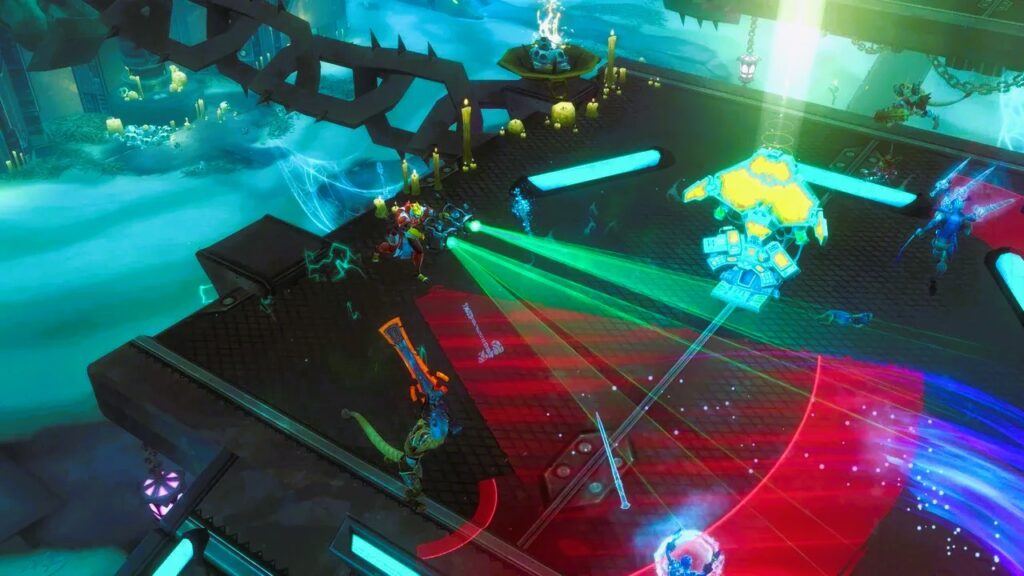In the dynamic world of gaming, competitive games stand out as some of the most engaging and enduring. From the strategic depth of League of Legends to the tactical precision of Counter-Strike, these games captivate millions of players and spectators worldwide. But what exactly makes a game competitive? This article delves into the essential elements of game design and balance that contribute to a game’s competitive nature.
1. Core Mechanics
The foundation of any competitive game lies in its core mechanics. These are the fundamental rules and systems that govern gameplay. Core mechanics should be intuitive yet deep enough to allow for strategic depth. For instance, in a game like StarCraft II, players must master resource management, unit control, and strategic planning. Each mechanic interacts with others to create a complex system where skillful play can consistently yield superior results.
To be competitive, a game’s core mechanics need to offer players multiple viable strategies. This diversity ensures that no single approach dominates, encouraging players to explore and innovate. A well-designed competitive game will provide a balanced mix of offensive, defensive, and strategic options, allowing players to adapt their playstyle to different situations and opponents.
2. Balance

Balance is perhaps the most crucial aspect of competitive game design. A balanced game ensures that no single strategy, character, or approach is overwhelmingly powerful. This equilibrium is essential for maintaining fairness and competitiveness. For example, in fighting games like Super Smash Bros., character balance is key to ensuring that no single character has an unfair advantage over others.
Achieving balance involves careful tuning and constant adjustments. Developers often use data from playtesting and live matches to make necessary changes. Balancing patches and updates are common in competitive games, where developers tweak elements such as character abilities, weapon stats, and game mechanics to address emerging imbalances.
3. Skill Expression
A competitive game must allow for skill expression—where player skill directly influences their success. Games that offer a high degree of skill expression typically have a steep learning curve, where mastering complex mechanics and strategies can significantly impact outcomes. This aspect encourages players to invest time and effort into improving their skills, fostering a sense of achievement and progression.
For instance, in first-person shooters like Call of Duty, precise aiming, reflexes, and strategic positioning are critical. Players who excel in these areas can outperform their opponents and gain an edge in competitive play. Similarly, in multiplayer online battle arena (MOBA) games like League of Legends, understanding champion abilities, map control, and teamwork can make a significant difference.
4. Player Agency and Strategy
A competitive game should offer players significant agency—control over their actions and decisions within the game. This player agency allows for diverse strategies and approaches, making the game more engaging and competitive. Games that limit player choices or force linear strategies can become stale and uninteresting.
In competitive games, strategic depth is essential. Players should be able to develop and execute various strategies based on their understanding of the game mechanics and their opponents. For example, in strategy games like Age of Empires, players must decide on resource allocation, unit composition, and tactics to outmaneuver their opponents. This strategic flexibility is crucial for maintaining a competitive edge. The best games to play with friends, more details in this article.
5. Meta and Evolution
The “meta” refers to the evolving strategies and trends in competitive play. As players discover and refine effective strategies, the meta shifts, influencing how games are played and won. A competitive game must adapt to these changes, ensuring that new strategies and approaches are viable and that outdated ones do not dominate.
Developers and players often drive meta evolution through updates, patches, and community discussions. For example, in the card game Hearthstone, the meta can shift dramatically with each expansion, introducing new cards and strategies that change the competitive landscape. This constant evolution keeps the game fresh and engaging, encouraging players to continuously adapt and improve.
6. Community and Competitive Scene

A vibrant and active community is vital for a competitive game. The community not only provides feedback and supports the game but also drives the competitive scene. Tournaments, leagues, and online competitions are essential for fostering a competitive environment where players can showcase their skills and compete for rewards.
Successful competitive games often have a well-established competitive scene with regular events and a dedicated player base. For instance, games like Dota 2 and Counter-Strike: Global Offensive have thriving esports ecosystems with major tournaments and professional leagues. These events not only highlight the game’s competitive nature but also contribute to its longevity and popularity.
Creating a competitive game involves a delicate balance of core mechanics, balance, skill expression, player agency, strategic depth, and community involvement. By focusing on these elements, developers can craft games that are not only challenging and engaging but also enduring in the competitive gaming landscape. Whether you’re a player aiming to improve or a developer striving to create the next big hit, understanding these principles can help you appreciate what makes a game truly competitive.
For more insights into game design and balance, you can refer to Wikipedia’s Game Design Page, which offers a comprehensive overview of the principles and practices involved in creating compelling and competitive games.

